Fix Windows Modules Installer Worker High CPU Usage
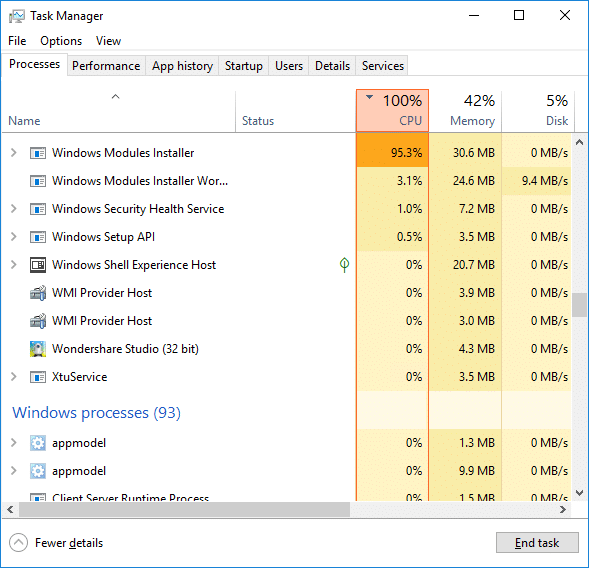
If you are facing the High CPU Usage by Windows Modules Installer Worker, then don’t worry as thousands of other users are also facing the similar problem and therefore, there are many working fixes which we will be discussing today in this article. To verify if you are facing this issue open Task Manager (Ctrl + Shift + Esc) and you will find that the Windows Modules Installer Worker is consuming High CPU or Disk Usage.

Pro Ntsis: You may leave your PC overnight or for a few hours to see the issue rectify itself once the Windows is finished downloading and installing updates.
What is Windows Modules Installer worker (WMIW)?
Windows Modules Installer worker (WMIW) is a service which takes cares of automatically installing Windows Update. According to its service description, WMIW is a system process that enables automatic installation, modification, and removal of Windows updates and optional components.
This process is responsible for finding new Windows Update automatically and installing them. As you might be aware that Windows 10 automatically install newer builds (i.e. 1803 etc.) via Windows Updates, so this process is responsible for installing these updates in the background.
Although this process is called Windows Modules Installer worker (WMIW) and you will see the same name in the Processes tab in the Task Manager, but if you switch to Details tab, then you will find the name of the file as TiWorker.exe.
Why Is Windows Modules Installer worker Using So Much CPU?
As Windows Modules Installer worker (TiWorker.exe) runs continuously in the background, sometimes it might utilize high CPU or disk usage when installing or uninstalling Windows Updates. But if its constantly using high CPU then the Windows Modules Installer worker may have become unresponsive while checking new updates. As a result, you may be experiencing lags, or your system might hang or freeze completely.
The first thing users do when they experience freezing, or lagging issues on their system is to restart their PC, but I assure you that this strategy won’t work in this case. This is because the issue will not resolve by itself until and unless you fix the underlying cause.
Fix Windows Modules Installer Worker High CPU Usage
Nco ntsoov tsim qhov taw tes rov qab tsuas yog thaum muaj qee yam yuam kev.
Windows Modules Installer Worker (WMIW) is an important service, and it should not be disabled. WMIW or TiWorker.exe is not a virus or malware, and you cannot just delete this service from your PC. So without wasting any time let’s see How to Fix Windows Modules Installer Worker High CPU Usage nrog kev pab los ntawm cov lus qhia daws teeb meem hauv qab no.
Txoj Kev 1: Khiav Windows Update Troubleshooter
1. Nias Windows Key + I qhib chaw nyem rau Hloov tshiab & Kev ruaj ntseg icon.
![]()
2. Los ntawm cov ntawv qhia zaub mov sab laug, xaiv troubleshoot nyob rau hauv “Sawv thiab khiav” nyem rau Qhov Hloov Piav Qhia qhov rais

3. Tam sim no nyem rau ntawm "Khiav lub teeb meem"hauv Windows Update.
4. Let the troubleshooter run, and it will automatically fix any issues found with Windows Update taking forever.
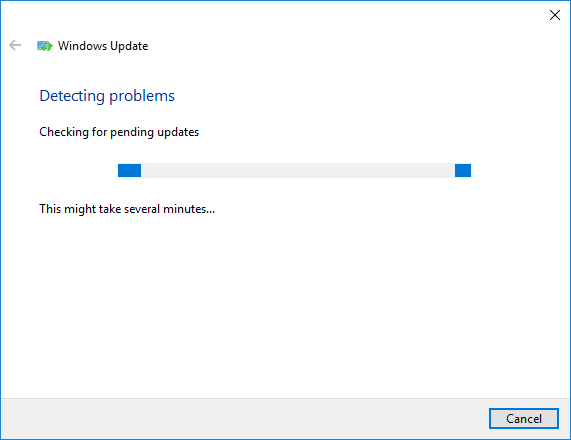
Method 2: Manually Check for Windows Updates
1. Nias Windows Key + I ces xaiv Hloov Kho & Ruaj Ntseg.
2. Los ntawm sab laug-tes, ntawv qhia zaub mov clicks rau Qhov Hloov Piav Qhia qhov rais
3. Tam sim no nyem rau ntawm "Kos rau cov tshiab” khawm txhawm rau txheeb xyuas cov kev hloov tshiab uas muaj.

4. Yog tias muaj kev hloov tshiab tseem tos, ces nyem rau Download & Nruab cov tshiab.

5. Thaum cov hloov tshiab tau rub tawm, nruab lawv, thiab koj lub Windows yuav hloov kho tshiab.
Method 3: Configure Windows Update to Manual
Ceeb toom: This method will switch Windows Update from automatically installing the new updates to the manual. This means you have to manually check for Windows Update (weekly or monthly) to keep your PC secure. But follow this method, and you can again set the Updates to Automatic once the issue is resolved.
1.Nias Windows Key + R ces ntaus services.msc thiab ntaus nkag.

2. Scroll down and find Qhov Modules Qhov Chaw service in the list.
3. Txoj cai-nyem rau Windows Modules Installer service thiab xaiv Zog.
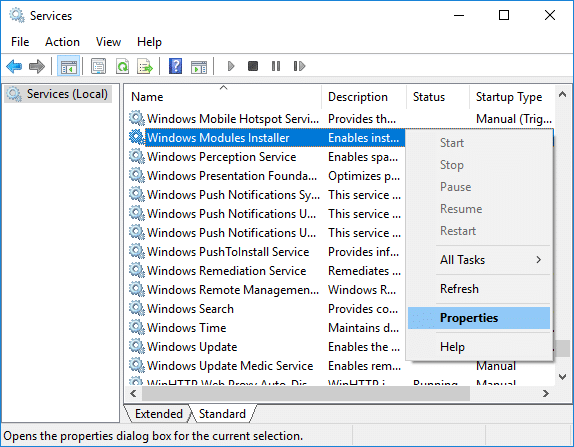
4. Tam sim no tau nyem rau Tsis txhob then from the Pib hom drop-down select Kev ceev.
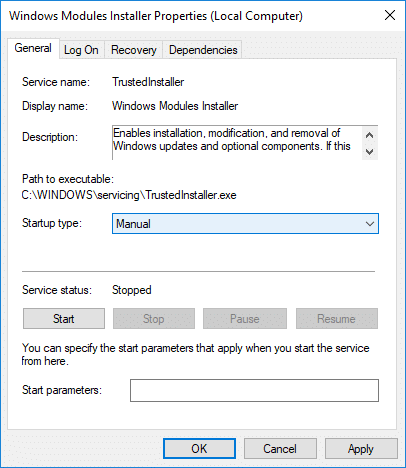
5. Nyem Thov, ua raws li OK.
6. Similarly, follow the same step for the Windows Update service.

7. Reboot koj lub PC kom txuag tau cov kev hloov pauv.
8. Ib Zaug Ntxiv kuaj rau Windows Updates Manually thiab nruab ib qho kev hloov tshiab tseem tos.
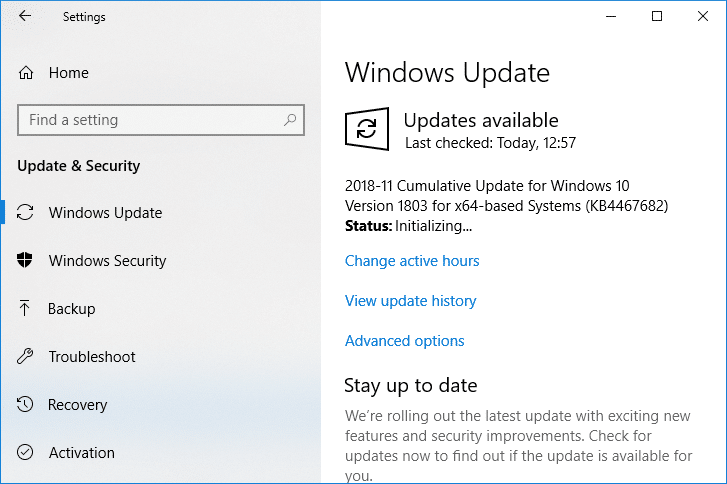
9. Once is done, again go back to services.msc window and open the Windows Modules Installer & Windows Update Properties qhov rais.
10. Teem lub Pib hom rau Tsis Siv Neeg thiab nias Start. Then click Apply followed by OK.
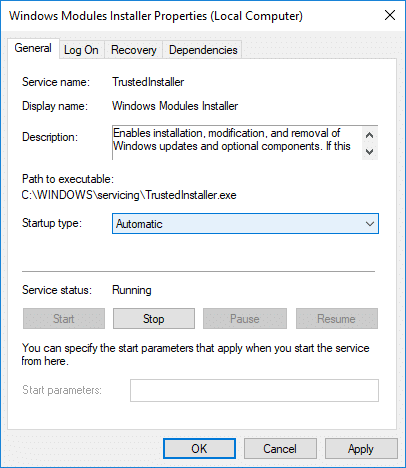
11. Reboot koj lub PC kom txuag tau cov kev hloov pauv.
Method 4: Khiav System Maintenance Troubleshooter
1. Press Windows Key + R then type control and hit Enter to open Tswj vaj huam sib luag.

2. Nrhiav teeb meem thiab nyem rau ntawm Kev daws teeb meem.

3. Txuas ntxiv mus, nyem rau ntawm saib tag nrho cov nyob rau sab laug pane.
4. Nias rau “System Maintenance” khiav lub System Maintenance Troubleshooter.

5. Cov teeb meem tuaj yeem ua tau Fix Windows Modules Installer Worker High CPU Usage, but if it didn’t, then you need to run System Performance Troubleshooter.
6. Qhib Command Prompt. Tus neeg siv tuaj yeem ua cov kauj ruam no los ntawm kev tshawb nrhiav 'cmd' Thiab tom qab ntawd nias sau.

7. Ntaus cov lus txib hauv qab no rau hauv cmd thiab ntaus Enter:
msdt.exe / id PerformanceDiagnostic
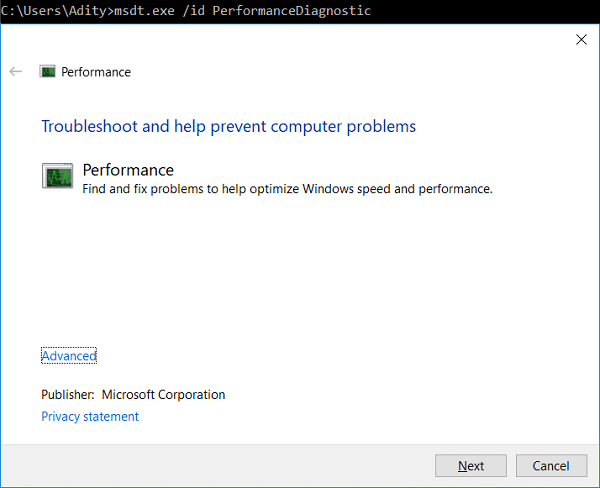
8. Follow the on-screen instruction to run the troubleshooter and fix any issues find the System.
9. Finally, exit the cmd and reboot your PC.
Method 5: Disable Automatic Maintenance
Sometimes Automatic Maintenance can conflict with the Windows Modules Installer Worker service, so try to disable Automatic Maintenance using this guide and see if this fixes your issue.
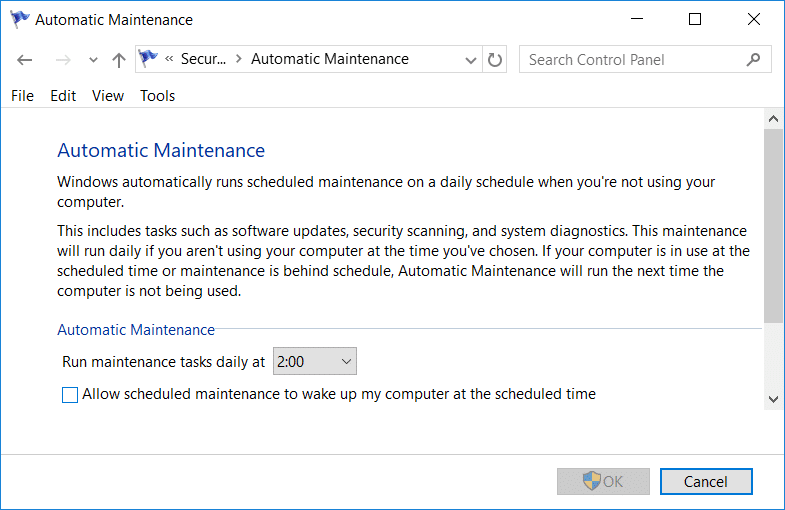
Although disabling Automatic Maintenance is not a good idea, but there might be some case where you need to actually disable it, for example, if your PC freezes during automatic maintenance or Windows Modules Installer Worker High CPU Usage issue then you should disable maintenance to troubleshoot the issue.
Method 6: Run System File Checker and DISM
1. Qhib Command Prompt. Tus neeg siv tuaj yeem ua cov kauj ruam no los ntawm kev tshawb nrhiav 'cmd' Thiab tom qab ntawd nias sau.
2.Tam sim no ntaus cov hauv qab no hauv cmd thiab ntaus enter:
Sfc / scannow sfc / scannow / offbootdir = c: / offwindir = c: windows (Yog hais tias saum toj no tsis ua haujlwm ces sim qhov no)

3. Tos rau cov txheej txheem saum toj no kom tiav thiab ib zaug ua tiav, rov pib koj lub PC.
4. Rov qhib cmd thiab ntaus cov lus txib hauv qab no thiab ntaus nkag tom qab txhua tus:
Dism / Online / Cleanup-Image / CheckHealth Dism / Online / Cleanup-Image / ScanHealth Dism / Online / Cleanup-Duab / RestoreHealth

5. Cia cov lus txib DISM khiav thiab tos kom tiav.
6. Yog hais tias cov lus txib saum toj no tsis ua hauj lwm, ces sim rau hauv qab no:
Dism / Duab: C: offline / Cleanup-Image / RestoreHealth / Source: c:testmountwindows Dism / Online / Cleanup-Duab / RestoreHealth / Source: c: testmountwindows / LimitAccess
Nco ntsoov: Hloov lub C: RepairSourceWindows nrog koj qhov chaw kho (Windows Installation lossis Recovery Disc).
7. Reboot koj lub PC kom txuag tau cov kev hloov pauv thiab saib seb koj puas tuaj yeem ua tau Fix Windows Modules Installer Worker High CPU Usage.
Txoj Kev 7: Ua kom huv huv khau raj
Sometimes 3rd party software can conflict with Windows and can cause the issue. To Fix Windows Modules Installer Worker High CPU Usage issue, koj yuav tsum ua kom huv si khau raj ntawm koj lub PC thiab kuaj xyuas qhov teeb meem ib kauj ruam.
Method 8: Set your WiFi as Metered Connection
Nco ntsoov: This will stop Windows Automatic Update, and you will need to manually check for Updates.
1. Nias Windows Key + I qhib chaw nyem rau Network & Internet.

2. Los ntawm cov ntawv qhia zaub mov sab laug, xaiv Wi-nkaus
3. Under Wi-Fi, nias on your currently connected network (WiFi).
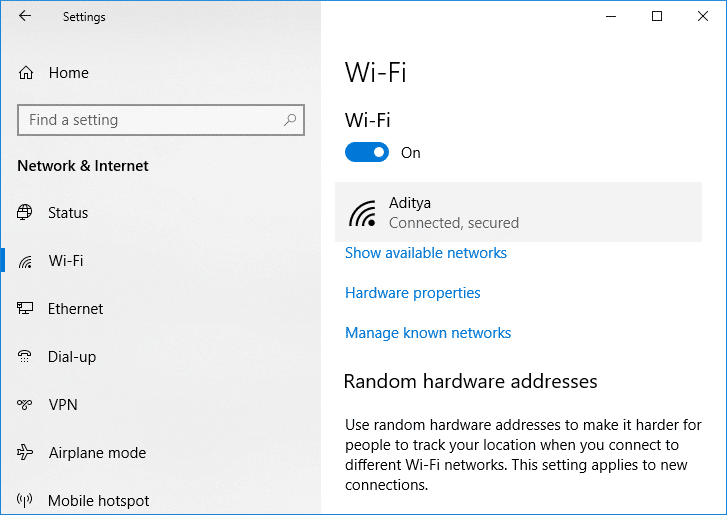
4. Scroll down to Metered connection and pab kom toggle nyob rau hauv “Teem raws li kev sib txuas lus".
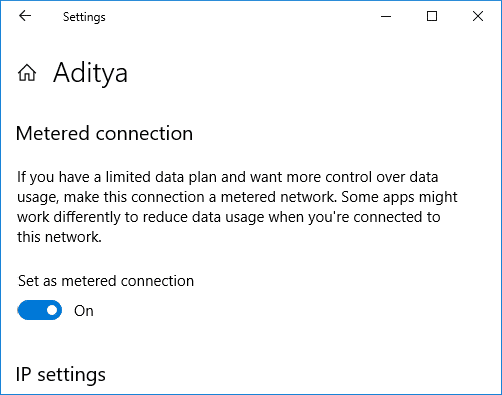
5. Close Settings and reboot your PC to save changes.
pom zoo:
Qhov ntawd yog nws, koj tau ua tiav Fix Windows Modules Installer Worker High CPU Usage tab sis yog tias koj tseem muaj lus nug txog qhov kev qhia no ces xav nug lawv hauv cov lus ntu.
